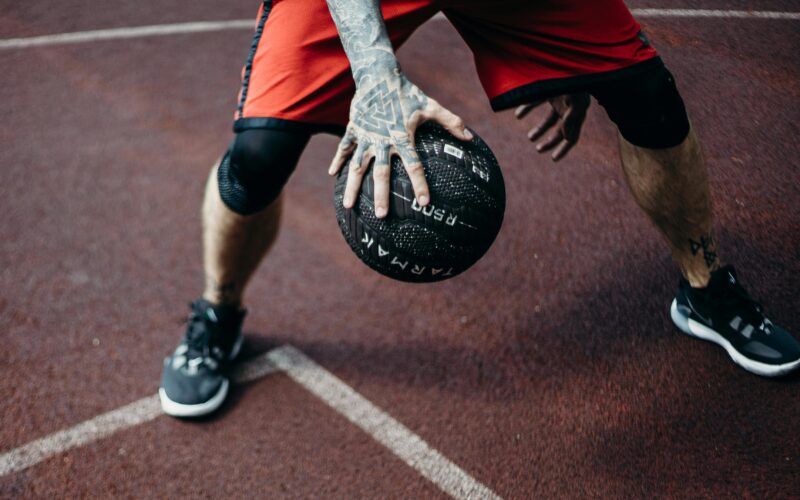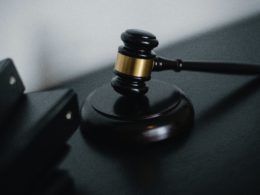David Beckham, Lebron James, Mike Tyson. Aside from achieving incredible success at the highest level of their respective sports, what do all of these athletes have in common? They all have distinctive tattoos that are integral to their public persona. Athletes’ increasing efforts to exploit their name, image, and likeness (NIL), has translated into legal challenges relating to their visible tattoos. For the ordinary person, a tattoo does not reach audiences of millions of people in various media. However, for athletes, copyright complications may arise when their tattooed image appears in movies, video games, commercials, social media, and brand campaigns. From these complications has emerged as the trilogy of athlete tattoo copyright cases, Solid Oak Sketches, LLC v. 2K Games, Inc.,1[1]Solid Oak Sketches, LLC v. 2K Games, Inc., 449 F. Supp. 3d 333 (S.D.N.Y. 2020). Alexander v. Take-Two Interactive Software, Inc.,2[2]Alexander v. Take-Two Interactive Software, Inc., 489 F. Supp. 3d 812 (S.D. Ill. 2020). and Hayden v. 2K Games, Inc.3[3]Hayden v. 2K Games, Inc., No. 1:23-cv-01234, (N.D. Ohio Apr. 19, 2024). Since this blog last addressed this issue in 2021, Alexander and Hayden went to jury trials with somewhat inconsistent verdicts.4[4]Christian Rivera, Are Defenses to Copyright Infringement a Stain on A Tattoo Artists’ Work?, BROOKLYN SPORTS & ENTERTAINMENT LAW BLOG, August 11, 2021 https://sports-entertainment.brooklaw.edu/sports/are-defenses-to-copyright-infringement-a-stain-on-a-tattoo-artists-work/
This article examines the legal developments since 2021 concerning the copyright implications of media reproductions of athlete tattoos and the legal reasoning behind these outcomes, and offers proactive strategies for tattoo artists, athletes, and companies aiming to incorporate athlete likeness in their media.
Drawing the Lines: Early Case Law on Media Reproductions of Athletes’ Tattoos
To understand the rights attaching to athlete tattoos, it is important to delineate the underlying law. Copyright protection does not extend to the human body itself;5[5]Davis S. Gold, Is Your Body Copyright-Protectable?, COLE SCHOTZ P.C. (Jul. 8, 2013). https://www.coleschotz.com/is-your-body-copyright-protectable/. it applies to the artistic design of the tattoo.6[6]Id. Under the Copyright Act, tattoos are eligible for copyright protection as pictorial and graphic works if they are original and fixed in a tangible medium.7[7]17 U.S.C. § 102(a) The case law surrounding copyright and athlete tattoos begins with Solid Oak Sketches, LLC v. 2K Games, Inc.8[8]Solid Oak Sketches, LLC v. 2K Games, Inc., 449 F. Supp. 3d 333 (S.D.N.Y. 2020). The dispute centered on five distinctive tattoos inked onto NBA players Kenyon Martin, Eric Bledsoe, and Lebron James and then reproduced on their avatars in 2k Games Inc.’s (“2k Games”) basketball video games.9[9]Id. at 339. Solid Oak Sketches, LLC (“Solid Oak”) held an exclusive license for each of the tattoos in controversy, granted to them by the actual tattoo artists who held copyrights for said tattoos.10[10]Id. at 340. Solid Oak alleged that 2K Games reproduced these tattoos in the video game series without permission, thus infringing its copyright.11[11]Id. at 339.
In 2020, a New York federal court awarded summary judgment to 2K Games, holding it did not infringe on Solid Oak’s copyright. The court gave three reasons for this holding: (1) the use was de minimis12[12]Id. at 345. (so small/of little importance the law will not consider it);13[13]De Minimus, CORNELL LAW SCHOOL: LEGAL INFORMATION INSTITUTE (Jan. 2022), https://www.law.cornell.edu/wex/de_minimis. (2) the players had an implied license to use and display the tattoos as part of their likeness;14[14]Solid Oak Sketches, LLC v. 2K Games, Inc., 449 F. Supp. 3d 333, 346 (S.D.N.Y. 2020). and (3) the use of the tattoos by 2K Games in the video games constituted fair use.15[15]Id. See Christian Rivera, Are Defenses to Copyright Infringement a Stain on a Tattoo Artists’ Work?, BROOKLYN SPORTS AND ENTERTAINMENT LAW BLOG, (Aug. 11, 2021), https://sports-entertainment.brooklaw.edu/sports/are-defenses-to-copyright-infringement-a-stain-on-a-tattoo-artists-work/.
New Ink, New Issue: Athlete Tattoo Copyright Cases Go to the Jury
Since the Solid Oak decision, two tattoo copyright cases went to trial after courts found that factual disputes precluded summary judgment.16[16]Alexander v. Take-Two Interactive Software, Inc., 489 F. Supp. 3d 812 (S.D. Ill. 2020) (denying summary judgment on the issues of implied license, transformative use, fair use, and de minimis use); Hayden v. 2K Games, Inc., 629 F. Supp. 3d 736 (N.D. Ohio 2022) (denying summary judgment on the issues of implied license, fair use, and de minimis use). Jury verdicts in Alexander v. Take-Two Interactive Software, Inc. and Hayden v. 2K Games, Inc. reached different outcomes.
In Alexander, tattoo artist Catherine Alexander, who inked multiple tattoos on wrestler Randy Orton,17[17]Sid Pullar III, Randy Orton Age, Height, Wife, Theme Song, Real Name, & More, SPORTS ILLUSTRATED (Feb. 28, 2025), https://www.si.com/fannation/wrestling/randy-orton-profile. brought a copyright infringement suit against Take-Two Interactive Software (“Take-Two”) and World Wrestling Entertainment (“WWE”).18[18]Alexander v. Take-Two Interactive Software, Inc., 489 F. Supp. 3d 812 (S.D. Ill. 2020). Alexander alleged that in digitally reproducing Orton’s likeness in the WWE 2k video game series,19[19]WWE 2K, WWE, https://wwe.2k.com, (WWE 2K franchise is a wrestling simulation game that includes realistic visuals and actions of WWE wrestlers that players can utilize in the game). defendants copied the tattoos without her permission.20[20]Alexander v. Take-Two Interactive Software, Inc., 489 F. Supp. 3d at 817. The factual record established that Alexander never informed her clients they needed her permission to use copies of her art in various media, nor did she give permission for such use.21[21]Alexander v. Take-Two Interactive Software, Inc., 489 F. Supp. 3d at 818. Defendants, on the other hand, relied on the undisputed fact that WWE had properly licensed Orton’s likeness and then sublicensed it to Take-Two to portray Orton in the video games.22[22]Id. According to WWE, it would not have allowed Take-Two to depict Orton without the tattoos or changes to his tattoos because the videogame needed to be accurate to real life.23[23]Id.
The Alexander jury found defendants liable for copyright infringement, but awarded Alexander only $3,750 in damages, a relatively nominal amount considering the costs of litigation.24[24]Id. Defendants then filed a motion for judgment as a matter of law, arguing that the videogame depiction of Orton was a non-infringing fair use25[25]Alexander v. Take-Two Interactive Software, Inc., No. 18-cv-966-SMY, 2024 WL 4286349, at 1 (S.D. Ill. Sep. 25, 2024). and that Alexander failed to prove actual damages.26[26]Alexander v. Take-Two Interactive Software, Inc., 2024 WL 4286349, at 3. The court upheld the liability verdict, but revoked the entire damages award as based on undue speculation. The court observed that Alexander presented no evidence at trial to support damages, and that her expert failed to explain how the video games’ sales or profits were attributable to the tattoos.27[27]Id. Although the Alexander verdict found copyright infringement, it represents a hollow victory for tattoo artists given the insignificant initial damages award, and its subsequent revocation.
In Hayden v. 2k Games, Inc., tattoo artist James Hayden sued now-familiar defendants, 2K Games and Take-Two, alleging copyright infringement for the unauthorized reproduction of his tattoo designs as they appeared on NBA players Danny Green, Lebron James and Tristan Thompson in their NBA 2K video games.28[28]Hayden v. 2K Games, Inc., 629 F. Supp. 3d 736, 741 (N.D. Ohio 2022). Claims relating to Green’s and Thompson’s tattoos were eventually dismissed because they were not original and derived from other artwork.29[29]Hayden v. 2K Games, Inc., No. 1:17-cv-02635-CAB (N.D. Ohio, Jan. 24, 2024). As to James’ tattoos, Hayden had obtained copyright registrations for the tattoos in 2016, 2017, and 2019, years after the tattoos were actually completed, and after James had appeared in earlier editions of the NBA 2K.30[30]Hayden v. 2K Games, Inc., 629 F. Supp. 3d at 741-42. Still, Hayden alleged that his tattoos are illegally copied every time a game is played, depicting highly realistic digital avatars of the player, including detailed reproductions of their tattoos.31[31]Hayden v. 2K Games, Inc., 629 F. Supp. 3d at 742.
Take-Two and 2K Games claimed that they had properly licensed the player’s likenesses from the NBA,32[32]Jason Owens, NBA, player’s union agree to reported $1.1B licensing deal for ‘NBA 2K’ video game, YAHOO! SPORTS, (Jan. 15, 2019), https://sports.yahoo.com/nba-players-union-agree-reported-1-1b-licensing-deal-nba-2k-video-game-024534007.html. which had obtained the rights in its collective bargaining agreement (“CBA”) with the National Basketball Players Association (“NBPA”).33[33]National Basketball Association & National Basketball Players Association, Collective Bargaining Agreement (Jul. 1, 2023), https://imgix.cosmicjs.com/25da5eb0-15eb-11ee-b5b3-fbd321202bdf-Final-2023-NBA-Collective-Bargaining-Agreement-6-28-23.pdf. They additionally argued that any verdict in favor of Hayden would undercut a player’s ability to license his own likeness.34[34]Id. The jury agreed and found that Hayden had granted James an implied license to reproduce his tattoos when commercially exploiting his likeness.35[35]Hayden v. 2K Games, Inc., 629 F. Supp. 3d 736, 749 (N.D.Ohio 2022). The jury accepted the defendants’ reasoning that a player through the CBA extended the implied license to the NBA, which subsequently granted an express license to 2K Games and Take-Two to use the tattoos in their NBA 2K games.36[36]Id. The jury was likely willing to infer an implied license in part because James’ agent had recommended the tattoo artist and that, despite knowing James was a star athlete who appeared in videogames, Hayden never told James he would need permission to reproduce the tattoos.
Hayden tracks with Solid Oak in that both cases view a tattoo artist’s copyright claims as subordinate to athletes’ rights to exploit their likeness. The Hayden verdict, however, may be specific to the circumstances of the case and may not apply in other situations, depending on what actually transpires between the athlete and the tattoo artist. Despite the opposing jury verdicts in Alexander and Hayden, both juries clearly discredited what a tattoo artist contributes when the artwork is reproduced in a videogame.
Moving the Needle Forward: What Does the Future Hold for Athletes and their Tattoos?
To mitigate the risk of copyright disputes over tattoos, tattoo artists, athletes, and companies must take proactive steps to establish clear agreements, secure necessary licenses, and ensure that they are in compliance with copyright law to avoid legal battles.
Tattoo artists should start with registering their tattoo designs with the U.S. Copyright Office.37[37]U.S. COPYRIGHT OFFICE, Register Your Work: Registration Portal, https://www.copyright.gov/registration/. As illustrated by Hayden, registering your tattoo designs does not guarantee a win in a copyright infringement suit.38[38]Hayden v. 2K Games, Inc., No. 1:23-cv-01234, (N.D. Ohio Apr. 19, 2024). However, it does give the artist a basis for a suit and leverage in any negotiations they might engage in with athletes or companies. Tattoo artists might also incorporate specific clauses in their standard tattoo release form that delineate the respective rights of the artist and the athlete as to the finished artwork. These agreements should clearly address whether the artist expects compensation for reproduction or commercial use when athletes license their NIL.
Athletes can counter any control artists might try to retain over tattoos with an explicit agreement stating that once a tattoo is on their body, it is in the athlete’s discretion how it is displayed and where. Realistically in this sort of negotiation, the celebrity athlete has the leverage and can likely find an artist who will relinquish any rights to the tattoo just to be able to ink the athlete.39[39]Richard Davies, Rahim Hirji, Tattoos, Athletes, and Image Rights, AMERICAN BAR ASSOCIATION – BUSINESS LAW TODAY (Dec. 15, 2021), https://businesslawtoday.org/2021/12/tattoos-athletes-and-image-rights/. Nonetheless, athlete agents would be wise to assess the option of offering a de minimis licensing fee to the tattoo artist. This approach is far simpler and less burdensome than litigation, which could involve dragging the athlete’s name into controversy, requiring their testimony, and exposing the athlete to the other complexities and risks associated with lawsuits.
As for companies looking to license the likeness of athletes, the law as it stands seems to be on their side. These companies should continue to obtain express licenses from leagues/unions for player NIL and seek indemnification for claims arising out of reproduction of tattoos.
When the Ink Dries
Taken together, the trilogy of tattoo copyright cases, Solid Oak Sketches, LLC v. 2K Games, Inc., Alexander v. Take-Two Interactive Software, Inc., and Hayden v. 2K Games, Inc., suggest that courts and juries are increasingly skeptical of attempts by tattoo artists to restrict the commercial use of athletes’ likenesses through copyright claims. Although the cases reached different outcomes, the broader trend points towards courts favoring the rights of athletes to fully license and commercially exploit their own likenesses, tattoos included. Moving forward, courts appear poised to continue balancing the rights of tattoo artists with the practical reality that tattoos become an inseparable part of an athlete’s identity.
Written by: Christian Leddell
Christian is a 2026 J.D. Candidate at Brooklyn Law School.
[1] Solid Oak Sketches, LLC v. 2K Games, Inc., 449 F. Supp. 3d 333 (S.D.N.Y. 2020).
[2] Alexander v. Take-Two Interactive Software, Inc., 489 F. Supp. 3d 812 (S.D. Ill. 2020).
[3] Hayden v. 2K Games, Inc., No. 1:23-cv-01234, (N.D. Ohio Apr. 19, 2024).
[4] See Christian Rivera, Are Defenses to Copyright Infringement a Stain on A Tattoo Artists’ Work?, Brooklyn Sports & Entertainment Law Blog, August 11, 2021, https://sports-entertainment.brooklaw.edu/sports/are-defenses-to-copyright-infringement-a-stain-on-a-tattoo-artists-work/
[5] Davis S. Gold, Is Your Body Copyright-Protectable?, Cole Schotz P.C. (Jul. 8, 2013). https://www.coleschotz.com/is-your-body-copyright-protectable/.
[6] Id.
[7] 17 U.S.C. § 102(a)
[8] Solid Oak Sketches, LLC v. 2K Games, Inc., 449 F. Supp. 3d 333 (S.D.N.Y. 2020).
[9] Id. at 339.
[10] Id. at 340.
[11] Id. at 339.
[12] Id. at 345.
[13] De Minimus, Cornell Law School: Legal Information Institute (Jan. 2022), https://www.law.cornell.edu/wex/de_minimis.
[14] Solid Oak Sketches, LLC v. 2K Games, Inc., 449 F. Supp. 3d 333, 346 (S.D.N.Y. 2020).
[15] Id. See Christian Rivera, Are Defenses to Copyright Infringement a Stain on a Tattoo Artists’ Work?, Brooklyn Sports and Entertainment Law Blog, (Aug. 11, 2021), https://sports-entertainment.brooklaw.edu/sports/are-defenses-to-copyright-infringement-a-stain-on-a-tattoo-artists-work/.
[16] Alexander v. Take-Two Interactive Software, Inc., 489 F. Supp. 3d 812 (S.D. Ill. 2020) (denying summary judgment on the issues of implied license, transformative use, fair use, and de minimis use); Hayden v. 2K Games, Inc., 629 F. Supp. 3d 736 (N.D. Ohio 2022) (denying summary judgment on the issues of implied license, fair use, and de minimis use).
[17] Sid Pullar III, Randy Orton Age, Height, Wife, Theme Song, Real Name, & More, Sports Illustrated (Feb. 28, 2025), https://www.si.com/fannation/wrestling/randy-orton-profile.
[18] Alexander v. Take-Two Interactive Software, Inc., 489 F. Supp. 3d 812 (S.D. Ill. 2020).
[19] WWE 2K, WWE, https://wwe.2k.com, (WWE 2K franchise is a wrestling simulation game that includes realistic visuals and actions of WWE wrestlers that players can utilize in the game).
[20] Alexander v. Take-Two Interactive Software, Inc., 489 F. Supp. 3d at 817.
[21] Alexander v. Take-Two Interactive Software, Inc., 489 F. Supp. 3d at 818.
[22] Id.
[23] Id.
[24] Id.
[25] Alexander v. Take-Two Interactive Software, Inc., No. 18-cv-966-SMY, 2024 WL 4286349, at 1 (S.D. Ill. Sep. 25, 2024).
[26] Alexander v. Take-Two Interactive Software, Inc., 2024 WL 4286349, at 3.
[27] Id.
[28] Hayden v. 2K Games, Inc., 629 F. Supp. 3d 736, 741 (N.D. Ohio 2022).
[29] Hayden v. 2K Games, Inc., No. 1:17-cv-02635-CAB (N.D. Ohio, Jan. 24, 2024).
[30] Hayden v. 2K Games, Inc., 629 F. Supp. 3d at 741-42.
[31] Hayden v. 2K Games, Inc., 629 F. Supp. 3d at 742.
[32] Jason Owens, NBA, player’s union agree to reported $1.1B licensing deal for ‘NBA 2K’ video game, Yahoo! Sports, (Jan. 15, 2019), https://sports.yahoo.com/nba-players-union-agree-reported-1-1b-licensing-deal-nba-2k-video-game-024534007.html.
[33] National Basketball Association & National Basketball Players Association, Collective Bargaining Agreement (Jul. 1, 2023), https://imgix.cosmicjs.com/25da5eb0-15eb-11ee-b5b3-fbd321202bdf-Final-2023-NBA-Collective-Bargaining-Agreement-6-28-23.pdf.
[34] Id.
[35] Hayden v. 2K Games, Inc., 629 F. Supp. 3d 736, 749 (N.D.Ohio 2022).
[36] Id.
[37] U.S. Copyright Office, Register Your Work: Registration Portal, https://www.copyright.gov/registration/.
[38] Hayden v. 2K Games, Inc., No. 1:23-cv-01234, (N.D. Ohio Apr. 19, 2024).
[39] Richard Davies, Rahim Hirji, Tattoos, Athletes, and Image Rights, American Bar Association – Business Law Today (Dec. 15, 2021), https://businesslawtoday.org/2021/12/tattoos-athletes-and-image-rights/.




